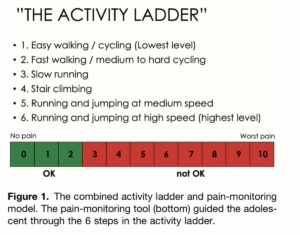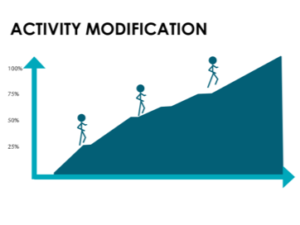Key Facts about Osgood-Schlatters

- A childhood repetitive-use injury that causes a pain below the kneecap
- Affects 1 in 10 adolescents between the age group of 9-15 years
- Pain commonly occurs during running , jumping sports like basketball ,soccer , gymnastics and athletics
- The condition has traditionally been to resolve within 12-18 months with rest being the key treatment. However 60 percent of the people with Osgood-Schlatter’s still have symptoms 4 years post diagnosis with most experiencing daily pain
- Adolescents with OSD to have 30 percent less quads strength in comparison to the unaffected leg
- Understanding how to manage training and competition loads , along with strength exercises are the key factors that will help you to get back to sport
- Stretching and other passive treatment only give short term relief
What is Osgood-Schlatters and why does it happen?
- The reason for this knee pain is not clearly understood
- It is associated with localised pain and swelling across the tibial tuberosity ( just below the knee cap )
- It is thought to be the result of the knee undergoing too much load /force beyond what it is capable of sustaining
- Osgood-Schlatter’s usually starts during adolescent / growing phase where in addition to the sporting load there is force on the knee due to growth spurt
- Too much load can be result of too much running , jumping and other activities which strain the knee
- It often reduces adolescent participation in sport and is often linked to decreased lower limb strength , power, poor function and quality of life
What can you do to help Osgood-Schlatter’s pain and symptoms?
Load management is the key thing to get right so you return to sport – To achieve this you might like to use the activity ladder (described below) as a bench mark over 4-12 weeks to facilitate progression to more challenging exercises. Progression through the ladder can be guided by a pain scale of 0-10. Any activity resulting in <2/10 on the pain scale is good to continue. Once you can participate at a level of the ladder without flaring up the pain you can try the next level

A Targeted individualised strength training program to gradually progress through the activity ladder can be helpful especially if you have had pain for a long time and lost strength. Important muscles being the quadriceps , hips and calf which all absorb

Source: Rathleff et al , 2020 , Journal of Orthopaedic and Sports Medicine
If you are having trouble to return to getting back to sport and exercise due to pain in your knee, please get in touch with Complete. Physio Exercise Performance in Richmond for proper assessment, diagnosis and guided strengthening and load management program . Telehealth options are located to anyone in Australia. Our modern clinic is located 656 Bridge Rd, Richmond.


